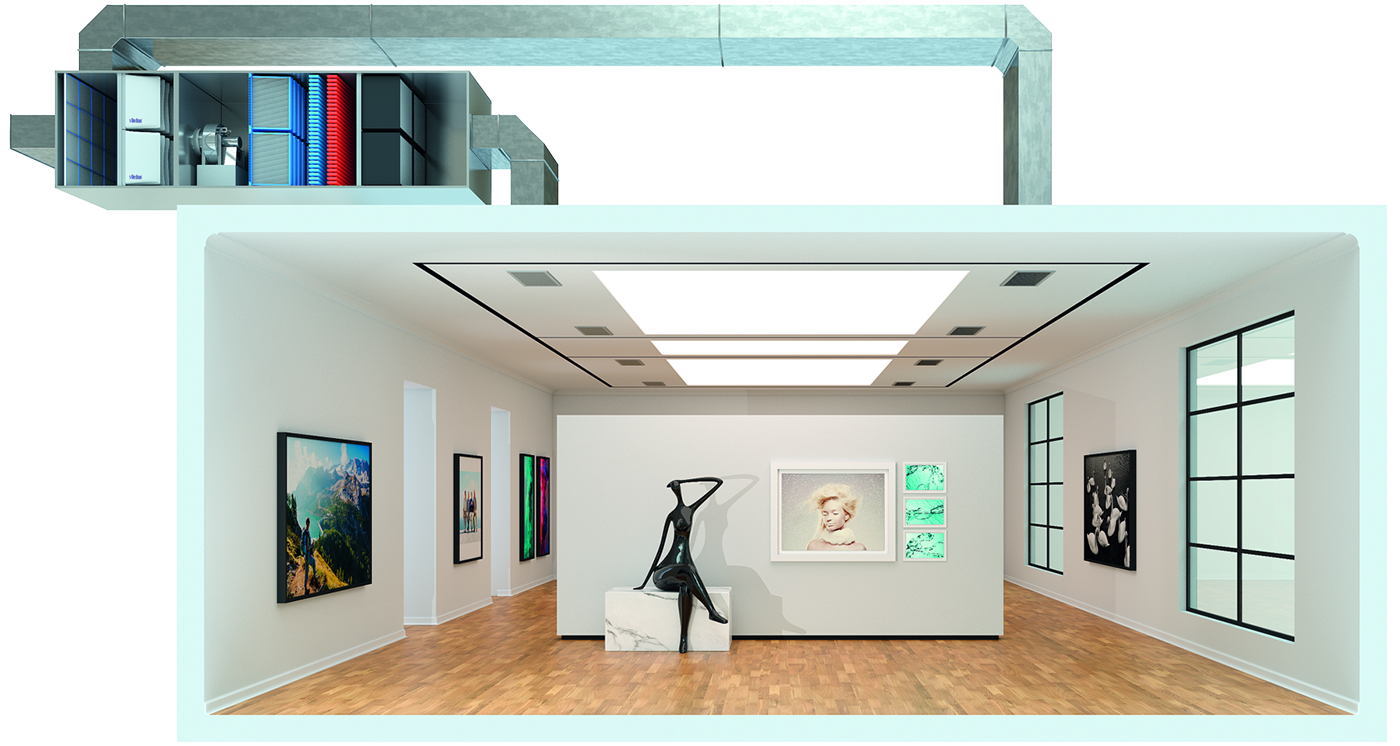
In large cities such as New York, the ambient air is composed of numerous different components.
With extreme caution, the cotton swab moves across the hilly landscape of the oil painting, freeing it millimeter by millimeter from the dust of the New York city air. Now it is time to hold your breath: Pablo Picasso’s “Flower Vase” is on the restorers’ table in the Museum of Modern Art. Even the slightest mistake could ruin this precious painting – no trivial responsibility. Slowly, the restorer sets the swab aside and breathes deeply to calm his nervous hands. All the energy needed for total concentration has been used up. For today, the dust has won.

In large cities such as New York, the ambient air is composed of numerous different components.
Most of the restorers’ work involves removing normal house dust from the Picasso: i.e., heavier particles larger than 10 microns, which settle more quickly due to their weight. However, metallic dust particles make cleaning more difficult; their sharp-edged surface can easily scratch the exhibits. House dust itself not only looks distracting. Due to its hygroscopic and mostly acidic properties, it can easily accumulate moisture and cause corrosion of metal or acid-sensitive materials. Smaller particles of 0.1-2.0 microns, on the other hand, do not settle so quickly. They remain in the air as suspended particles, where they also bind and transport pollutants.
The composition of the suspended particles is directly related to the environment. The city air of busy 53rd Street, in front of the Museum of Modern Art, mainly contains pollutants from combustion engine exhaust gases: tiny particles that adsorb harmful gases such as sulfates, nitrates or ozone and accumulate in the outside air. Ozone is a strong oxidant and causes decomposition and brittleness in paper, textiles and rubber.
Although ozone decomposes rapidly indoors, this process produces organic acids, aldehydes and ketones, which are themselves classified as air pollutants. Along with these pollutants, the composition of the suspended dust inside the museum is complex. It is formed from a combination of reactions between the exhibits and general dust inside the museum, as well as the particles that visitors bring with them: skin particles, fabric fibers or gases from the air they breathe.
When restorers securely sealed textiles in airtight foil, they noticed that artworks produce pollutants even without air supply. Even though the exhibits were protected from external influences, the materials of the pieces reacted with each other so that volatile acids accumulated, leading to their condition deteriorating. Instead of airtight sealing, the right solution is a constant exchange of air. This dilutes pollutants produced in the museum and thus protects the artworks.
To avoid new pollutants entering the museum from the outside, sophisticated air conditioning and ventilation systems are required. These must filter both harmful gases and particles from the supply air as well as having a long service life. For this to be achieved, the sequence and selection of the filters used is crucial. The more efficiently an air filtration system is designed, the less dust is introduced from the outside air.
The right filter system can be crucial when it comes to protecting art in the long term

The importance of good indoor air makes reliable air filters essential. Freudenberg Filtration Technologies can provide the ideal solutions. For example, our multifunctional indoor air filter features a carbon-impregnated medium designed to deal with aerogenic pollutants such as formaldehyde, VOCs or ammonia. If required, this can be enhanced by an integrated biocide- and nanosilver-free biofunctional layer, which offers triple protection against air pollutants and household contaminants. This multi-layer system is an ideal combination of gas phase and particle filters. To increase the longevity of the system, upstream filters perform a prefiltration function to reduce the workload of the high-tech multifunctional filter.
With Smart Home applications such as an air filter sensor, a series of complementary filter options can be efficiently deployed in an energy-saving manner. The incredibly fine sensor cable running through the filter reacts to the smallest stimuli and lets the artificial intelligence know if a filter is still working optimally or needs to be replaced. The smart house provides information on whether the room air sensors have detected a deviation from the reference value and ventilation is required. In other words – smart filters that are deployed only when they are needed.